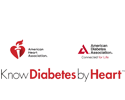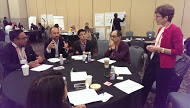Health Care Innovation is a Game That Everyone Can Play
Why? Because everyone has been a patient, experienced a pain point, identified an unmet need, or had an idea to improve the health care experience. However, one of the really challenging parts of health care innovation is that, while there are a lot of respectable ideas out there, the vast majority of these ideas get lost in the gap between idea and tangible venture.
At MIT Hacking Medicine, we often refer to this gap as the “valley of death”, because it’s where good ideas go to die. To that end, our organization is dedicated to assisting aspiring innovators and entrepreneurs in bridging this gap.
MIT has a long and storied history of “hacking,” so it should come as no surprise that our signature event is in the form of a “Healthcare Hackathon.” These events help to break down the siloes in health care by encouraging unlikely players to work together. Instead of thinking independently, attendees from multiple disciplines spend the weekend designing solutions to real world medical challenges. Our unorthodox approach to health care innovation has helped over a dozen teams turn their weekend “hack” into viable startups, backed by over 70 million in investment capital. The model is now being used across the globe to accelerate health care opportunities into reality.
The MIT Hacking Medicine team was on site at the 2015 Biotechnology Industry Organization (BIO) International Convention to run the Idea Design Studio. Unlike our typical events that last 48 hours, participants at the BIO Convention were asked to roll up their sleeves and tackle pressing health care challenges in less than 4 hours.
The call to action was amazing – in less than 4 hours participants broke into 8 teams within the themes of personalized medicine, clinical trials, and patient engagement. Next, these researchers, clinicians, business executives, designers, educators and students discussed challenges and problems within these three themes. They spent the remainder of the time developing a solution. Before wrapping up the workshop, teams were given three minutes to pitch their innovative solutions to the audience. Some of these solutions included reducing the clinical trial dropout rate through gamification, providing easy access to genetic information for patients and providers, and my personal favorite, educational and support tools for the family care providers of Alzheimer’s patients throughout the progression of the disease.
The Idea Design Studio aimed to bring together some of the brightest minds in biotechnology with a shared passion for transforming health care. In only four short hours, participants demonstrated an incredible amount of ingenuity while crafting solutions to opportunities within the space of personalized medicine, clinical trials, and patient engagement. New partnerships were formed and continued collaborations are in the works. We truly appreciate the energy and dedication on display by the participants and are extremely grateful to BIO for giving us the opportunity help raise the profile of healthcare innovation and entrepreneurship.
The Idea Design Studio is a wonderful example of applying out-of-the-box thinking to solving today’s healthcare problems. Have you encountered other examples? Let us know in the comments section.


















